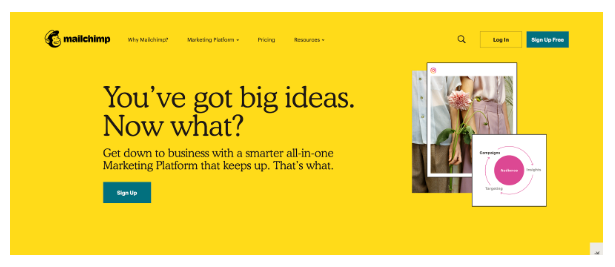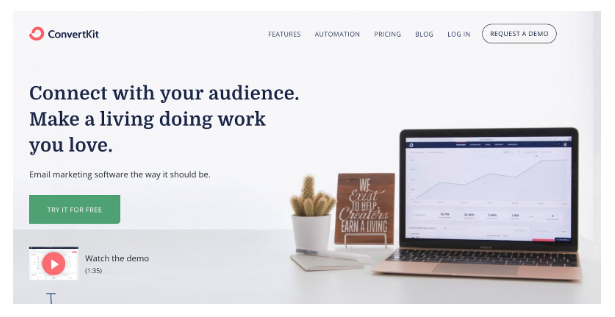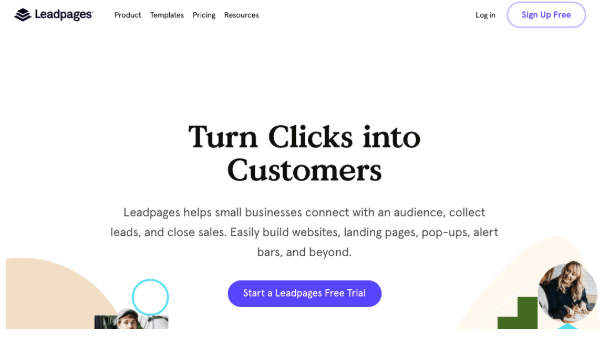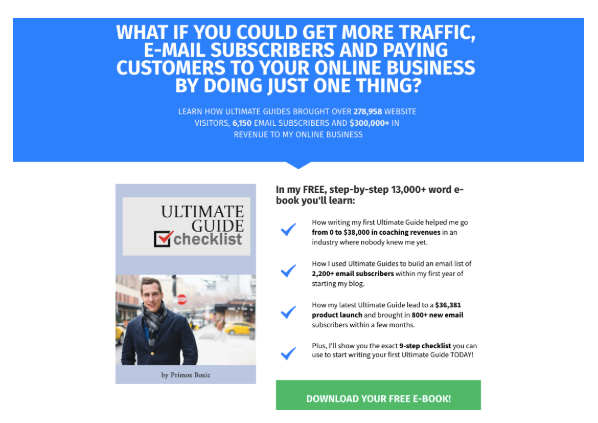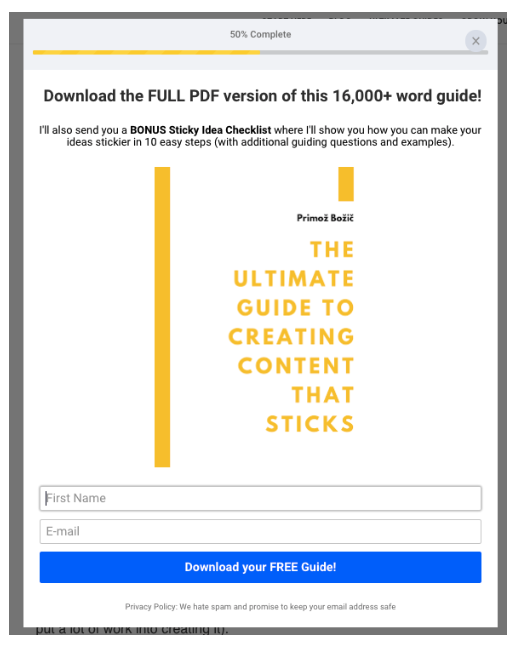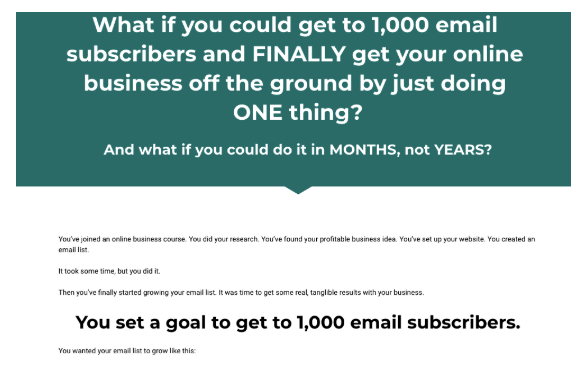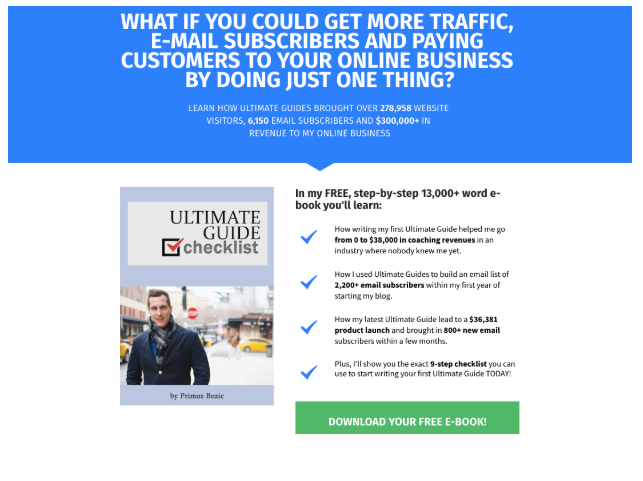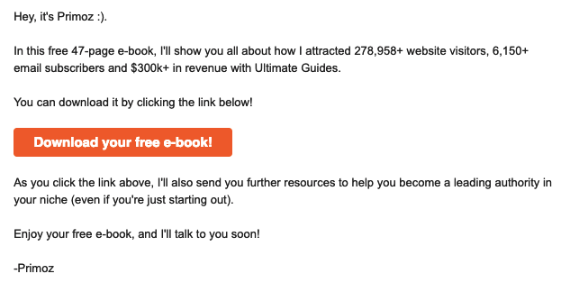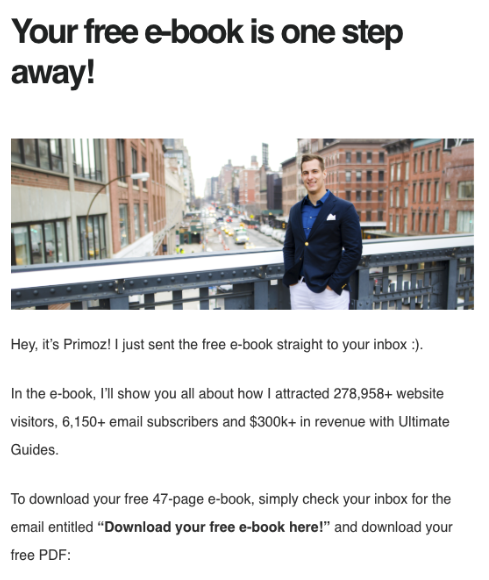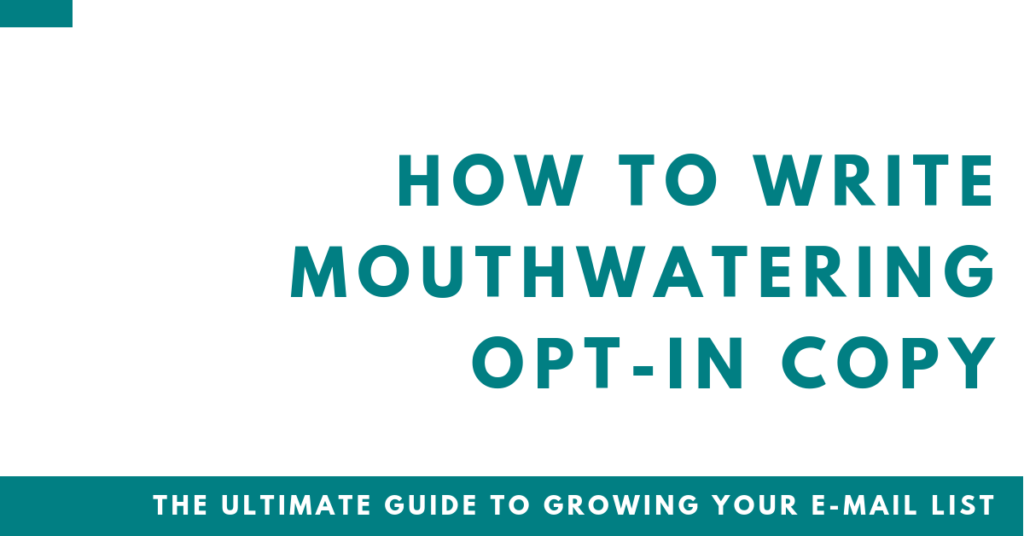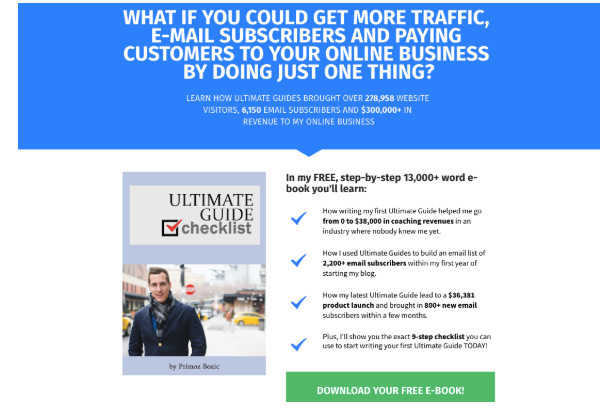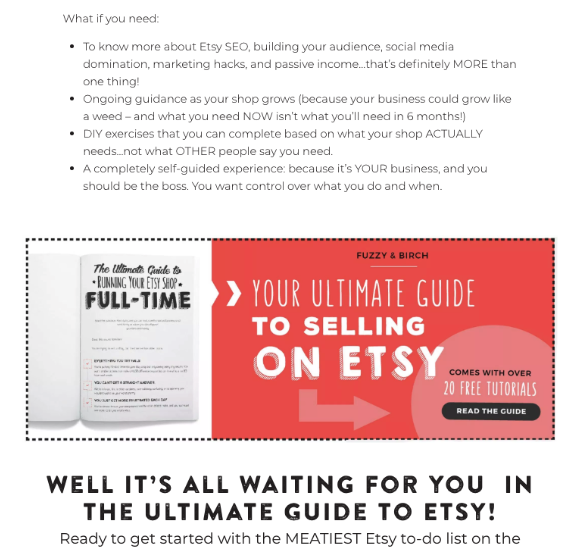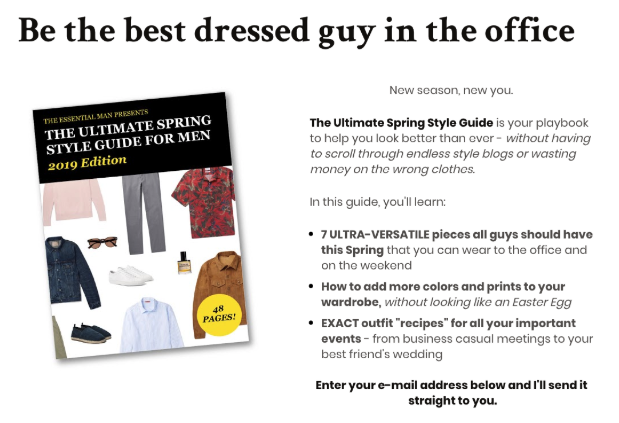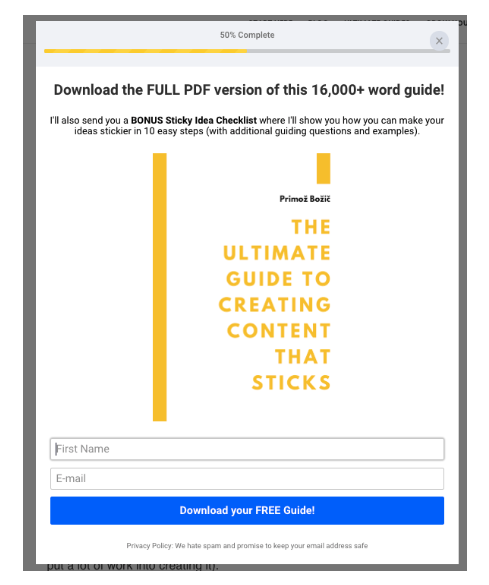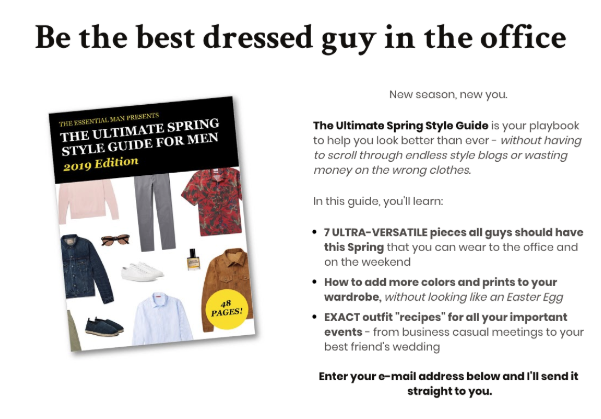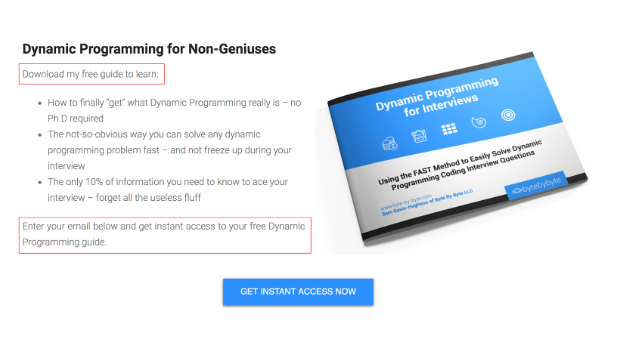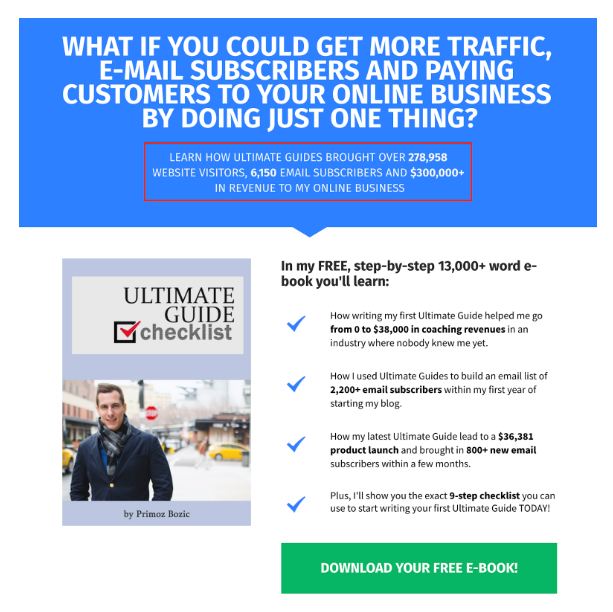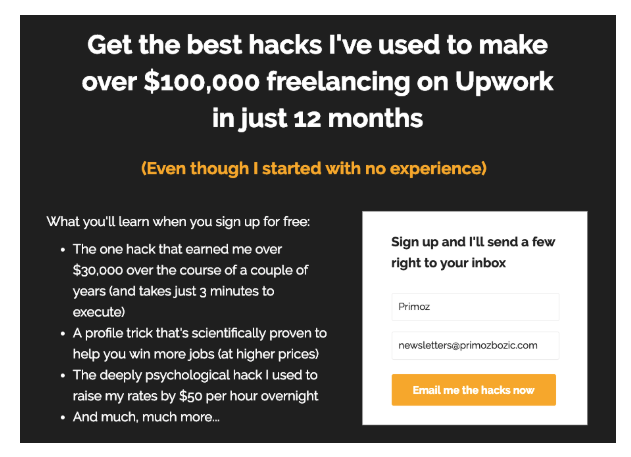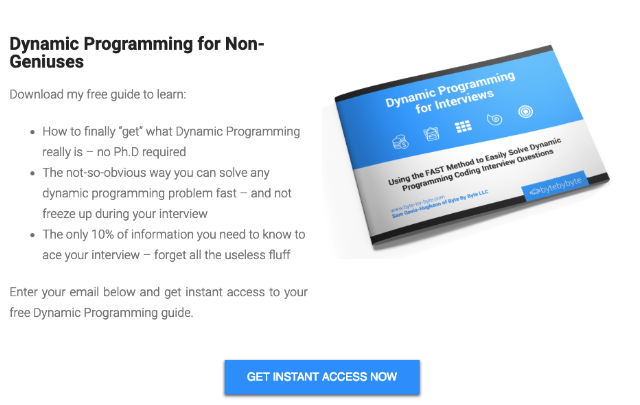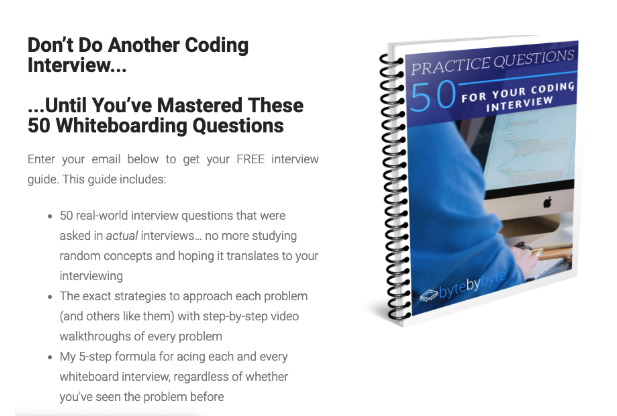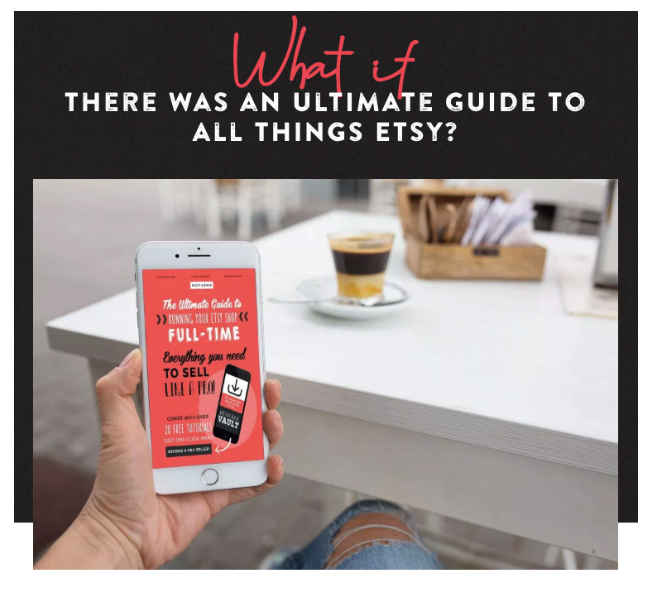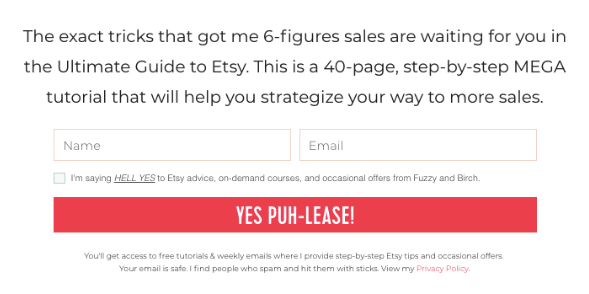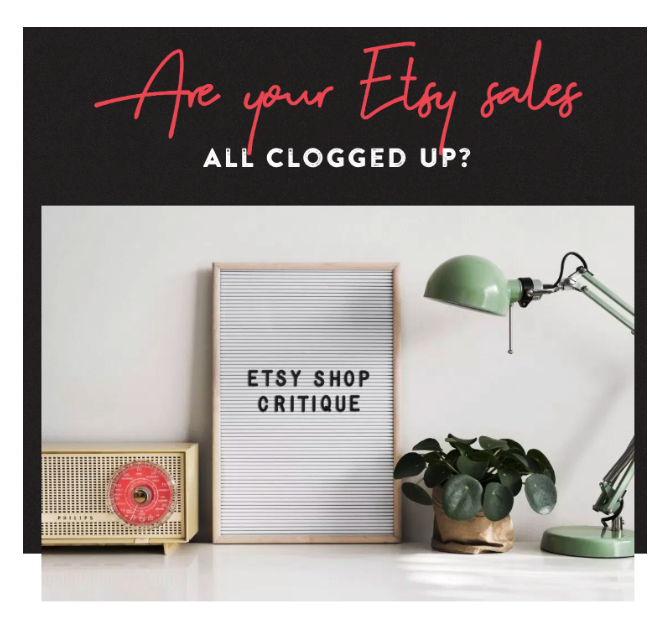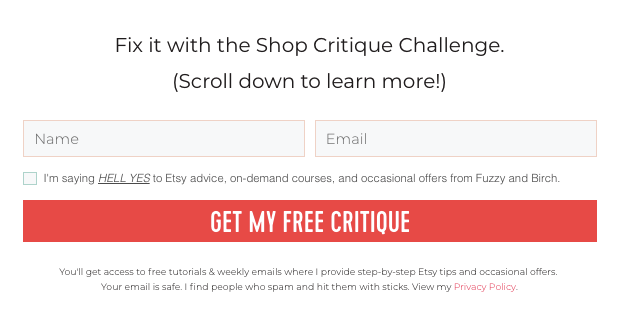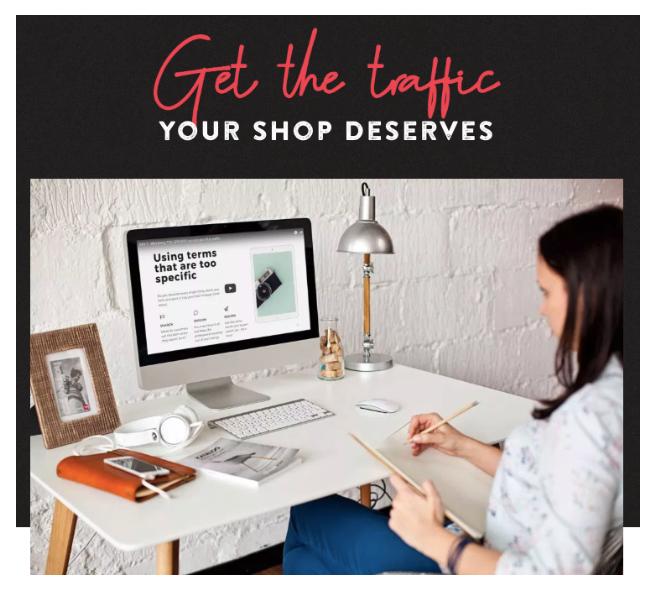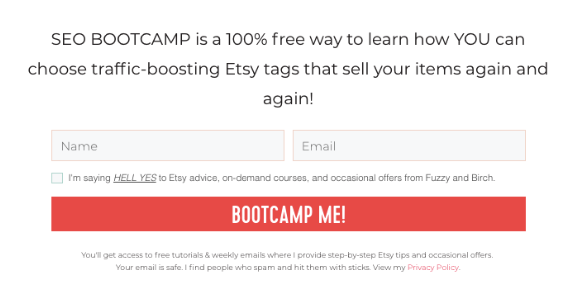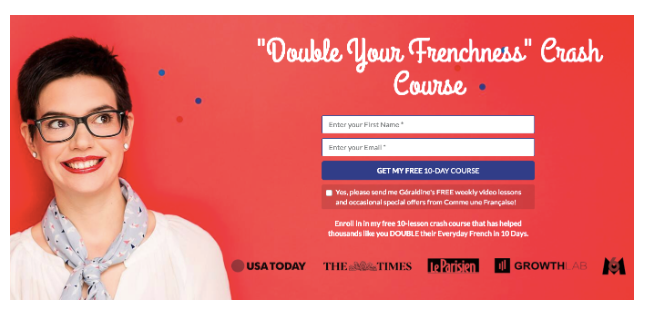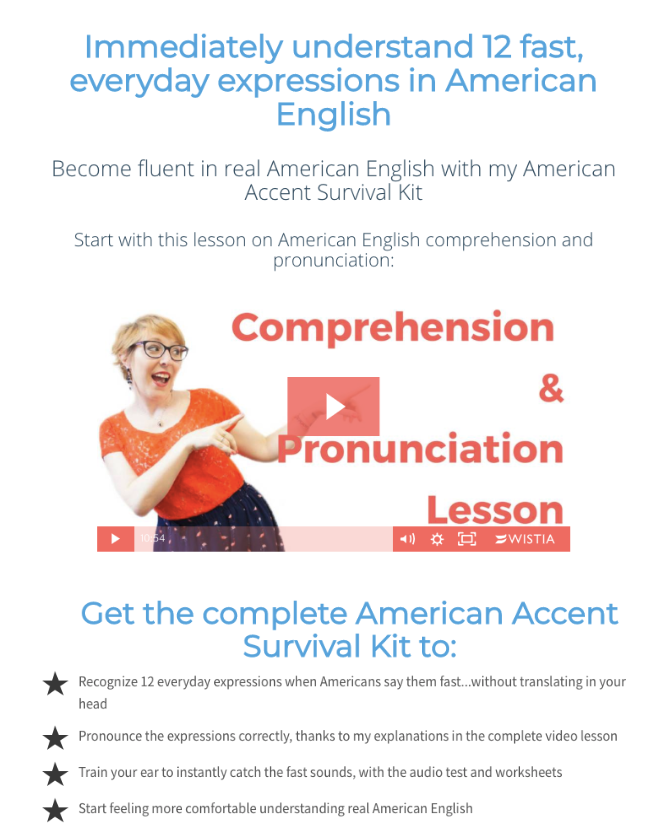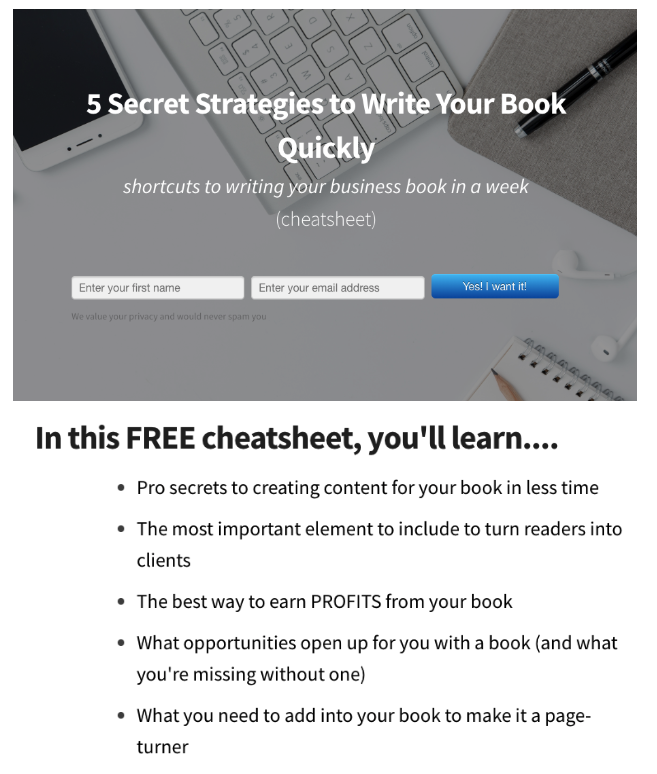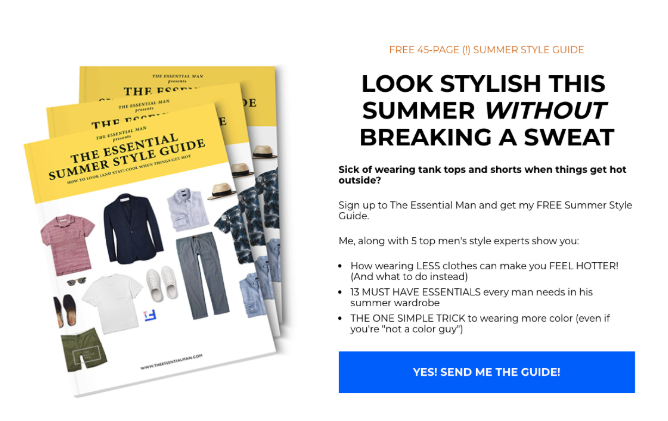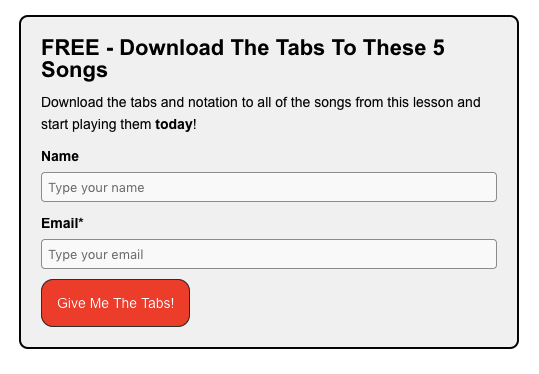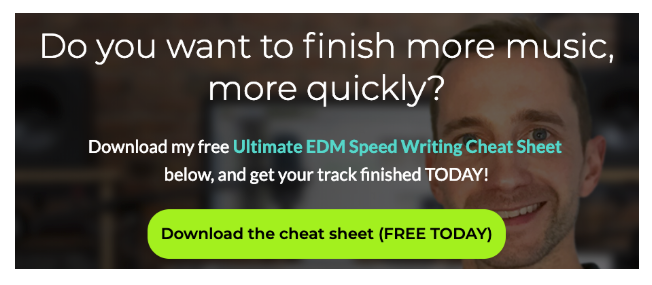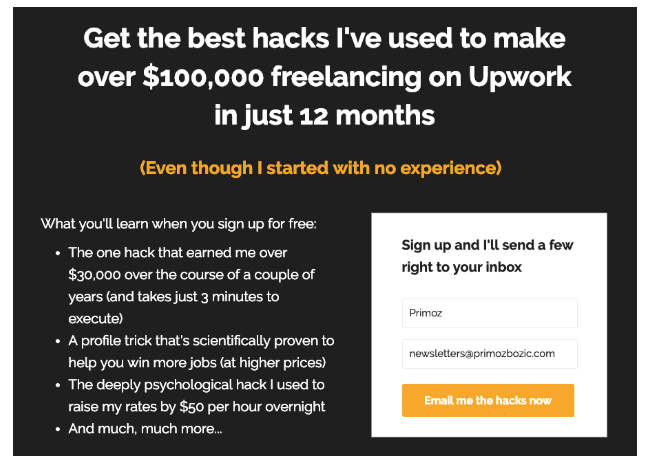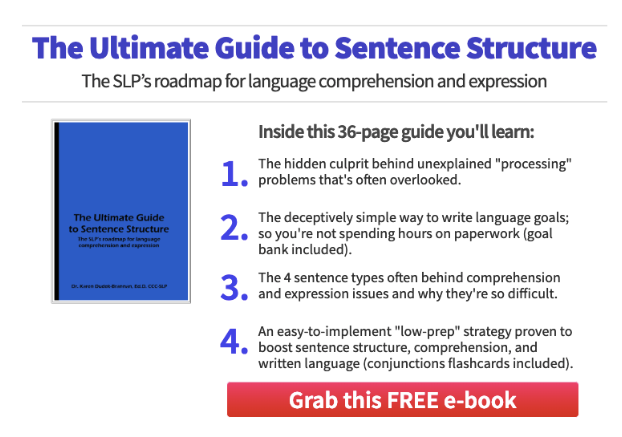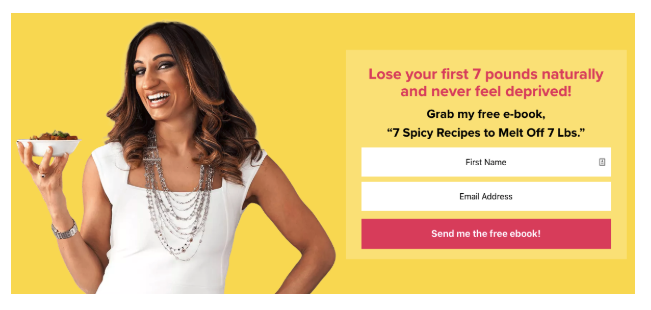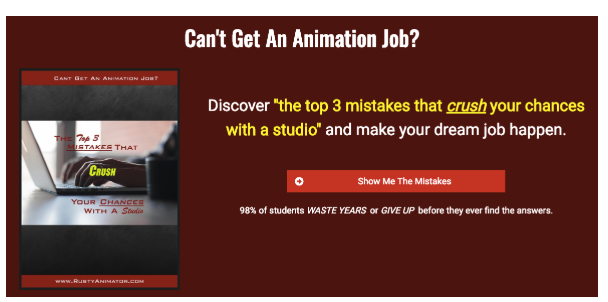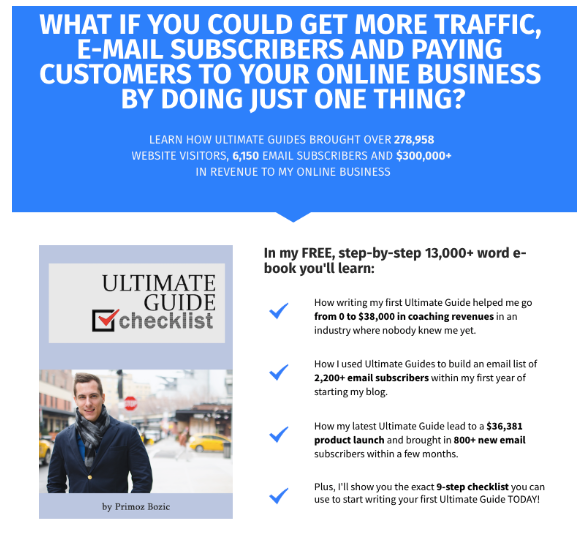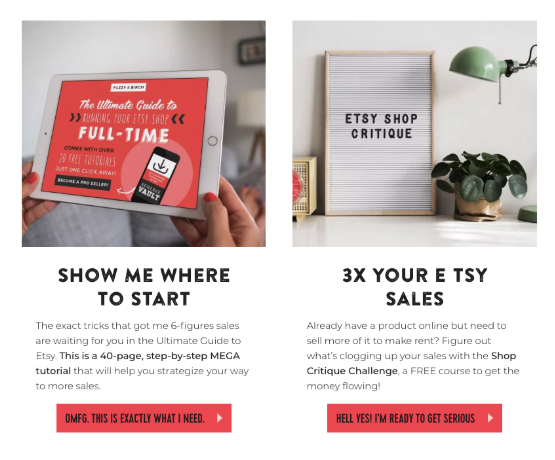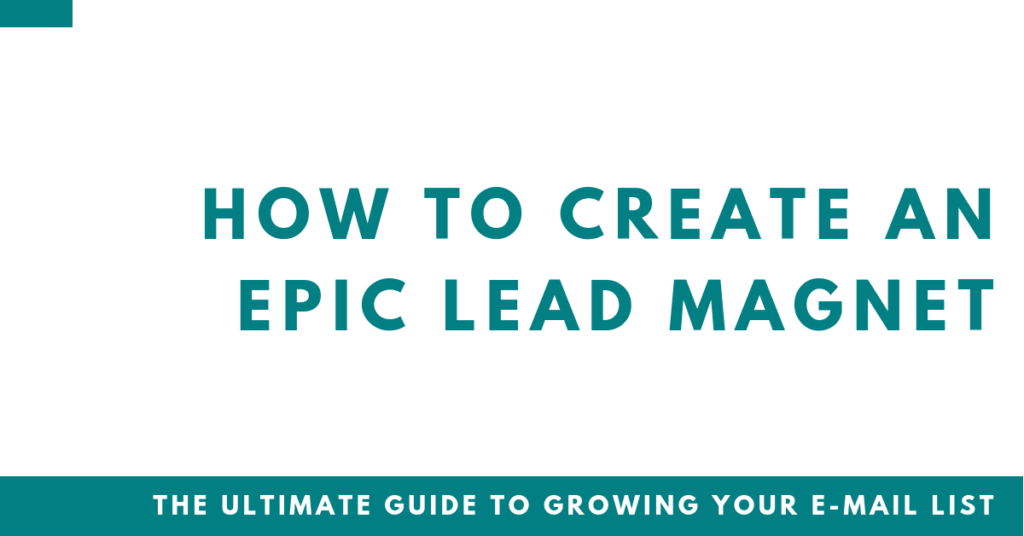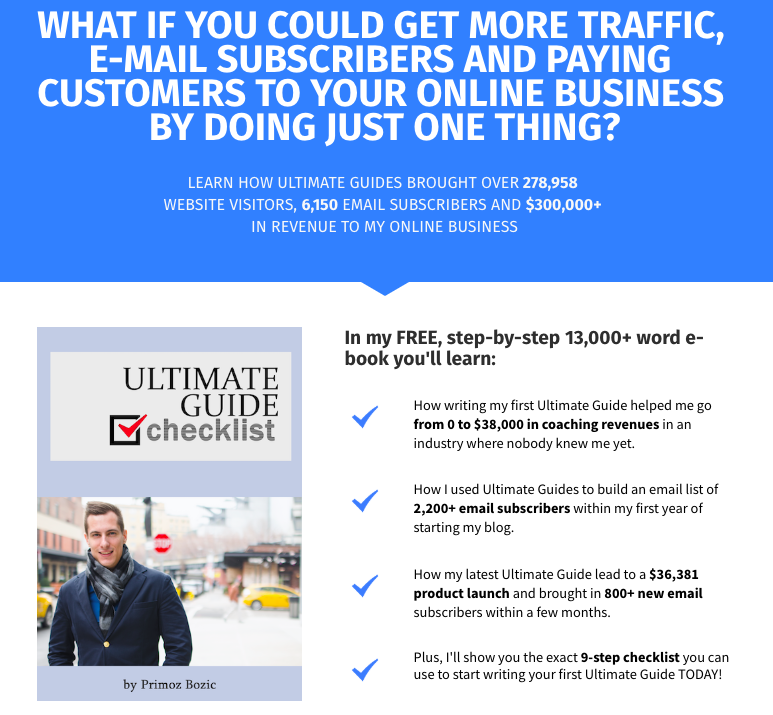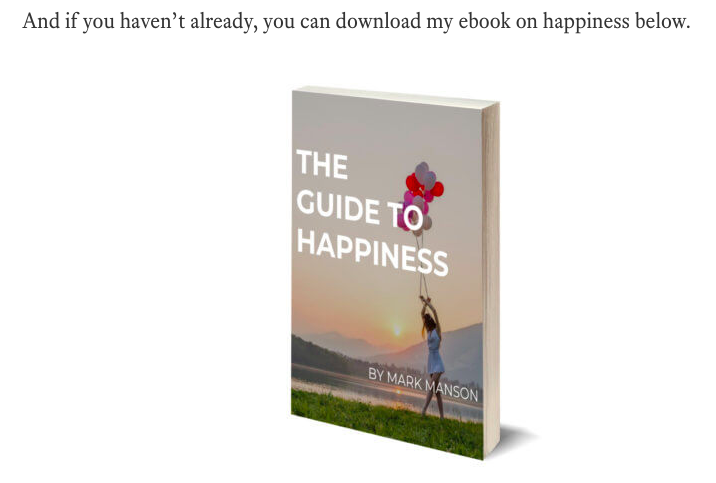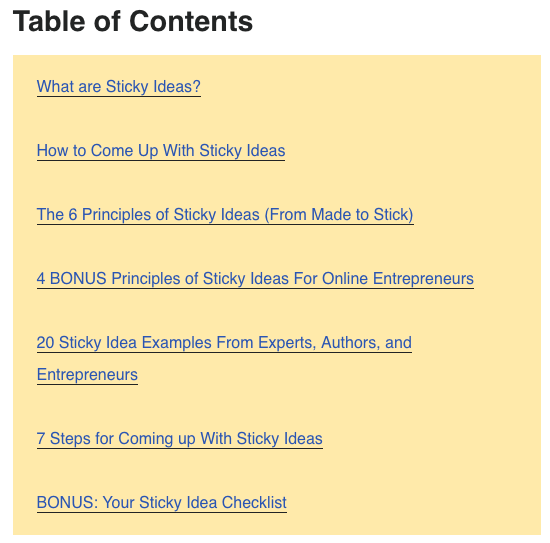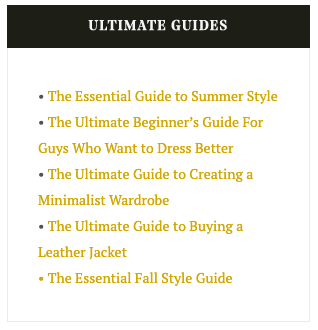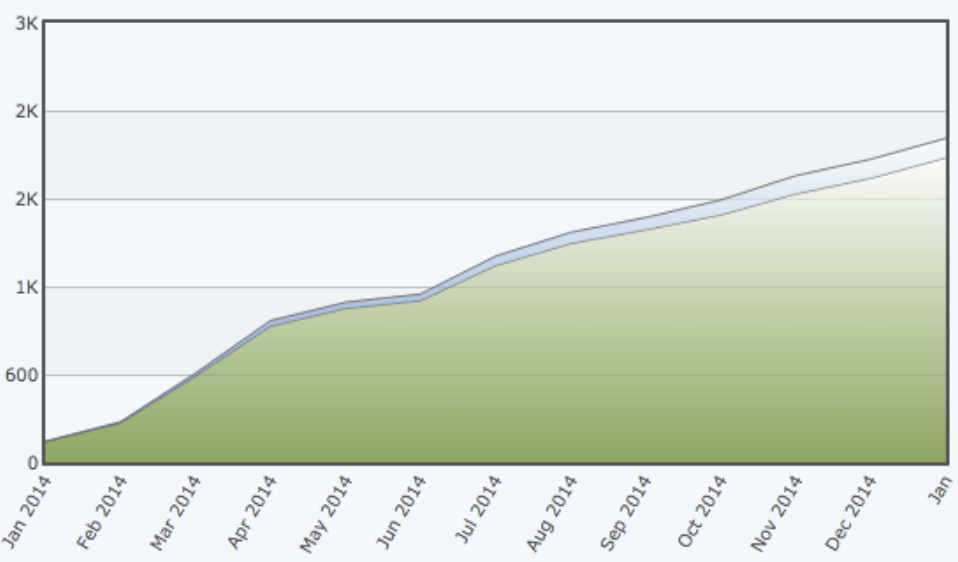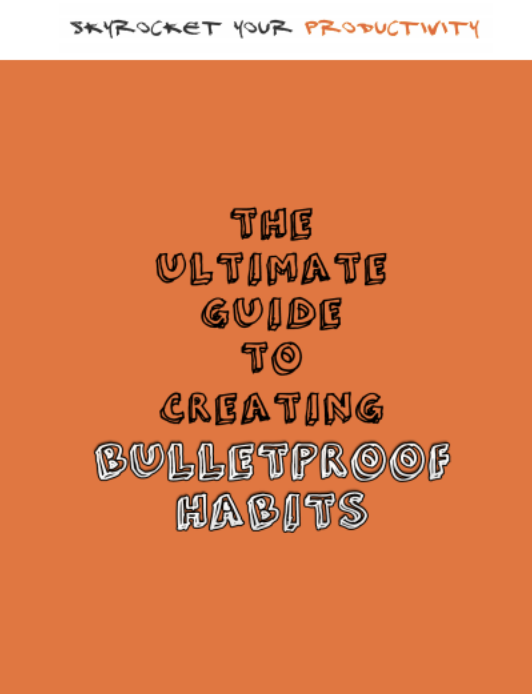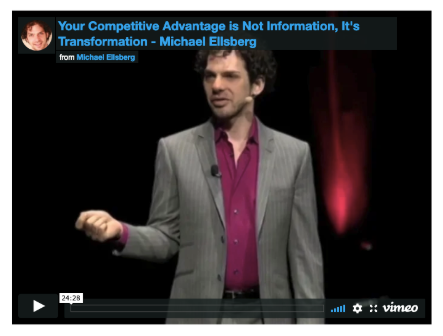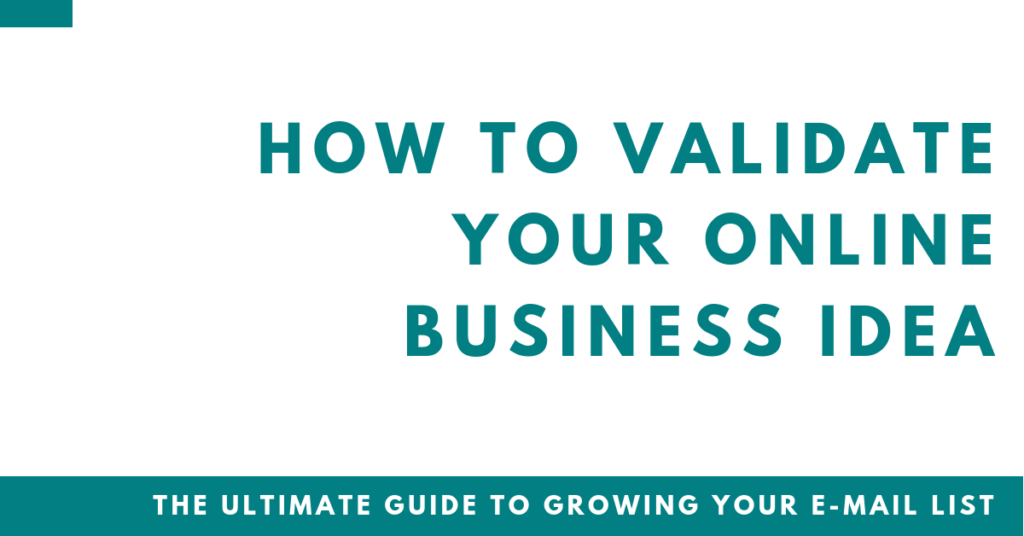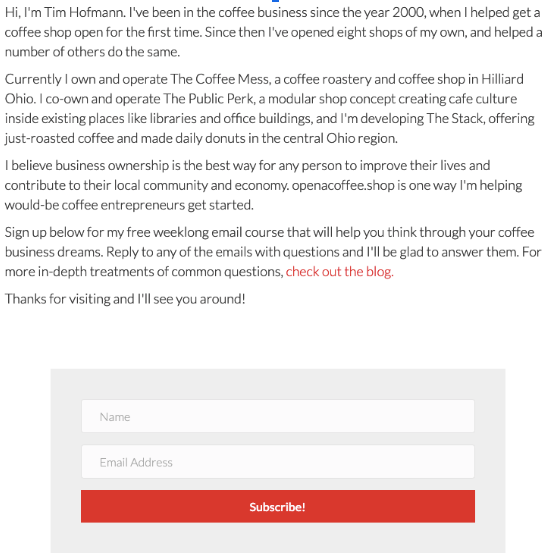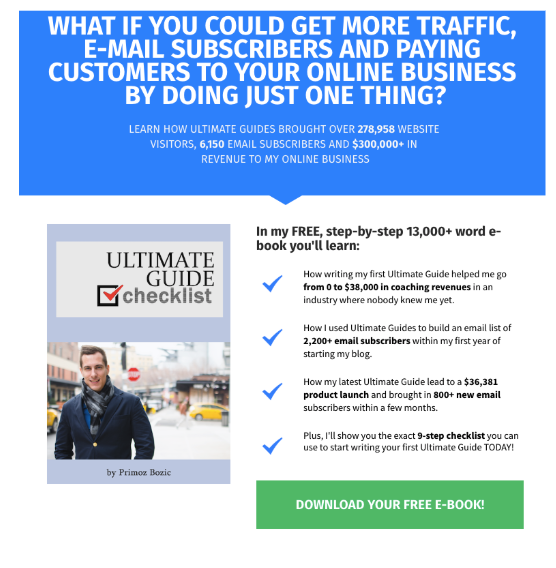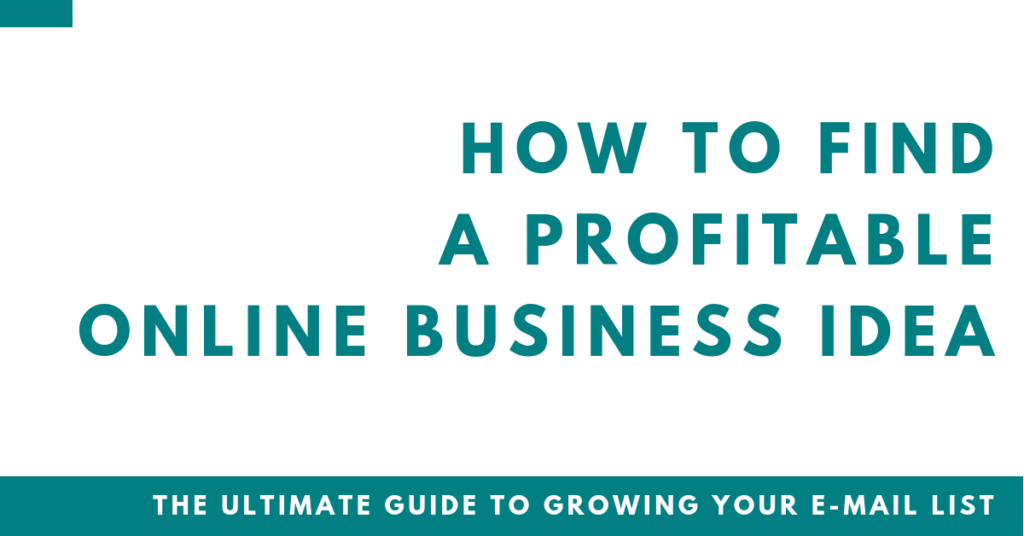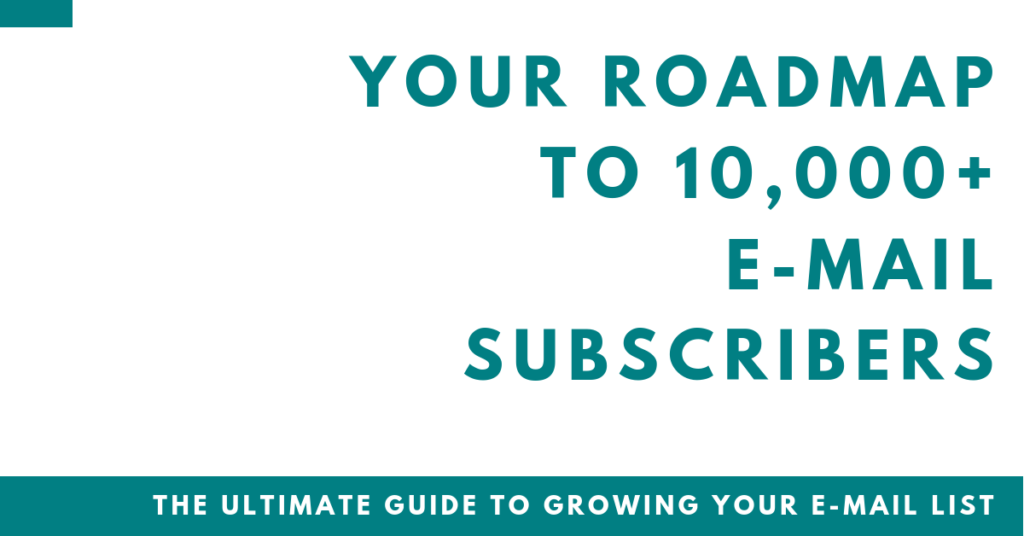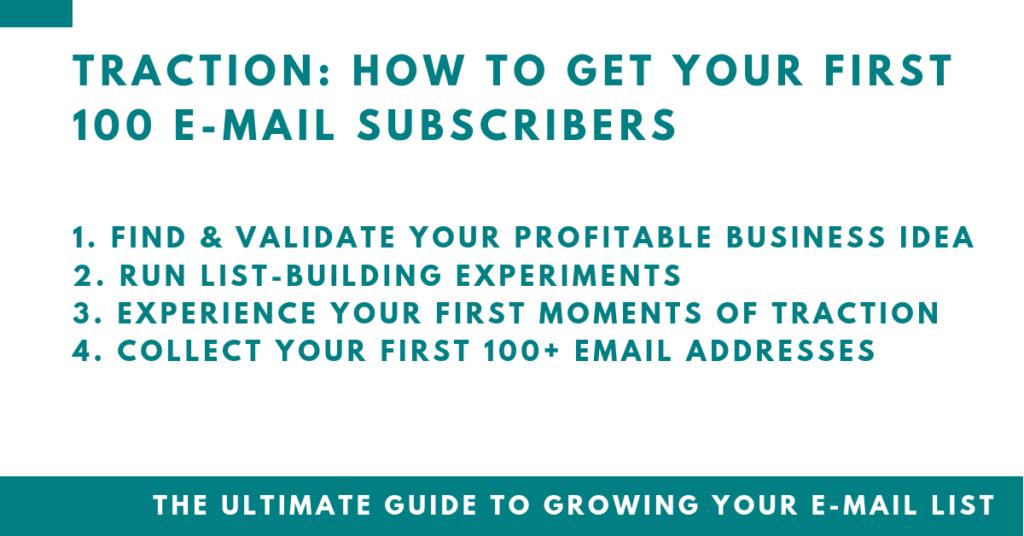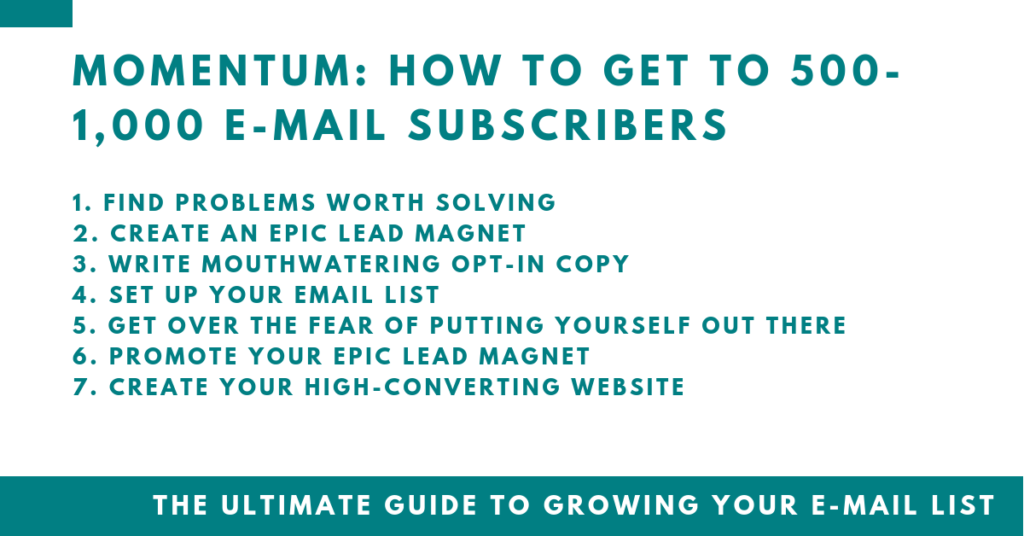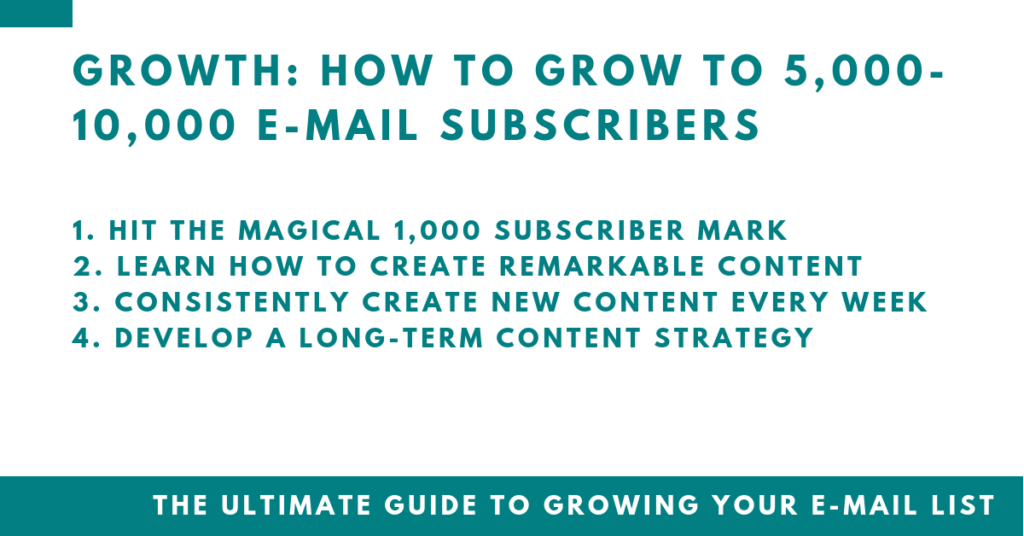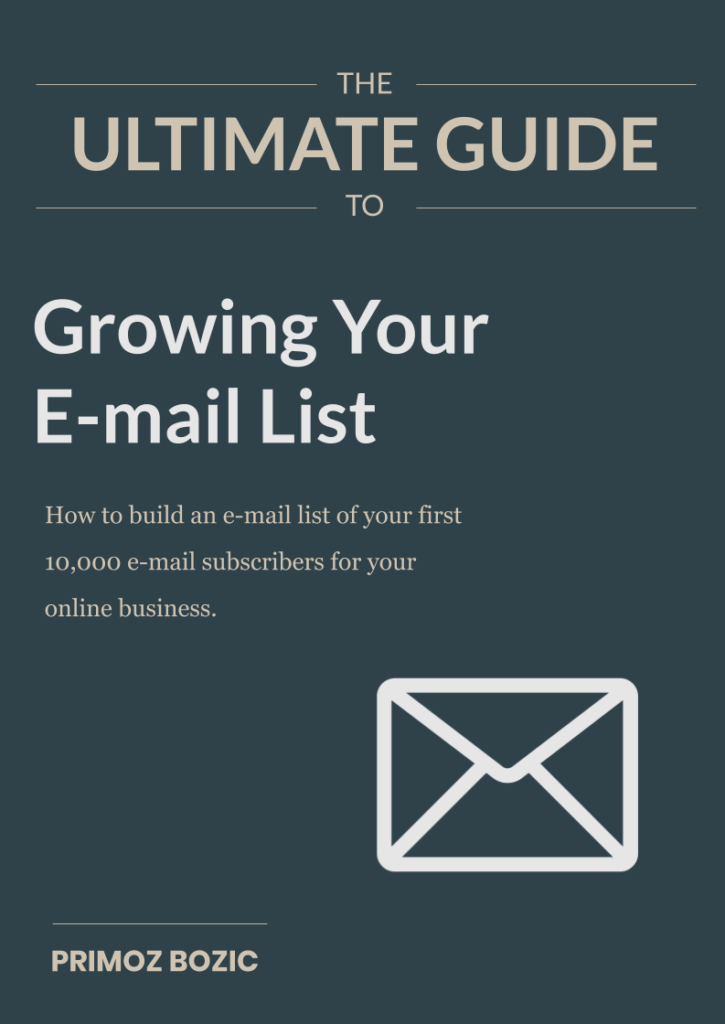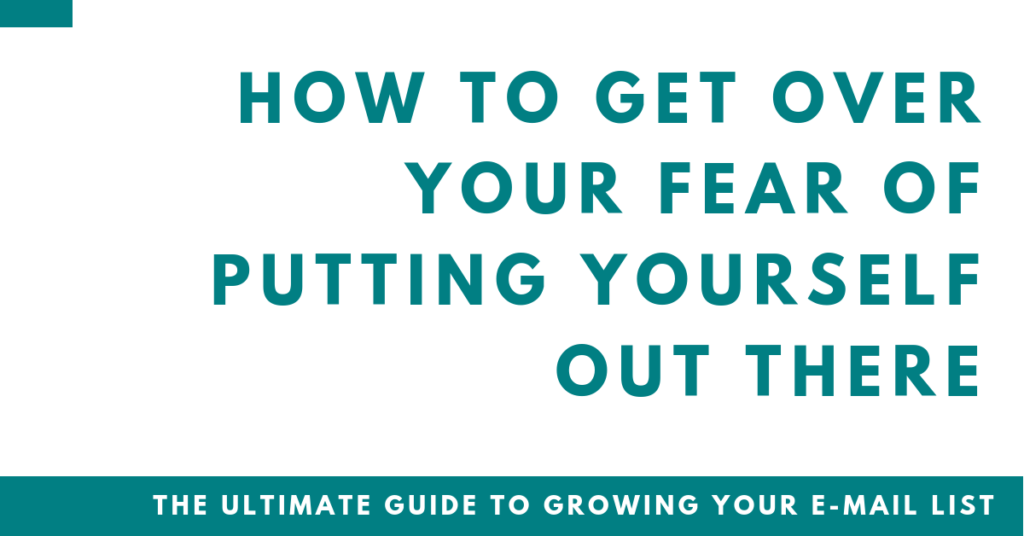
You’re currently reading Chapter 9 of The Ultimate Guide to Growing Your E-mail List.
I still remember when I started my own online business. I was a 20-year-old writing articles on the internet, and often felt like I had no idea what I was doing and wondered why anyone would ever listen to me.
I was afraid to put myself out there.
I remember countless situations where this fear overcame me and completely paralyzed me.
I would get an introduction to someone who I admired, only to never follow up on it because I didn’t feel good enough to accept it.
I got introduced to a conference host only to never reach out to them because I felt like I had nothing important to say.
Deep down, I knew I had something valuable to offer though. I was just afraid to put myself out there and see what people would think of me.
I was afraid of what my friends and family would say or think of me. I was afraid of what my clients or peers would think of me. Even my mentors that supported me in my journey.
Often times, I wanted to just crawl away and hide, rather than stand behind my work and let it reach as many people as possible.
It took me years to get over this fear, and way too much trial and error and missed opportunities.
That’s why today, I’m excited to share with you what works – so you don’t have to go through the same hell I did.
5 Strategies for Overcoming Your Fear of Putting Yourself Out There
As you build an online business, you’ll have to start putting yourself out there and promote your content, lead magnets, products, and services to reach as many people as possible.
This means that you’ll open yourself to mean comments, negative feedback, criticism, haters, internet trolls, comments from your friends and family, and more.
It’s natural to feel nervous at this step, and I see many upcoming entrepreneurs completely freeze up when they get to this stage of starting their online business.
Writing an Epic Lead Magnet and setting up your e-mail list in the background is easy, because you can’t get hurt.
But putting your best work out into the world to be judged? Or shouting it from the rooftops and letting everyone you know know about it? Even the thought of that can make you puke.
Unfortunately you can’t help people without putting yourself out there, just like you couldn’t open a restaurant and hope for people to magically find it, without telling anyone about it. You need to talk about your work in order for people to be able to find it.
In this chapter, I’ll teach you how to do that in the most authentic way possible – but before I do that, I want to help you conquer your fear of self-promotion to help you confidently put yourself out there.
I asked the entrepreneurs I interviewed for this guide how they handled their fear of putting themselves out there and will share their 5 best strategies below:
Strategy #1: Don’t put yourself out there – solve problems instead
Sara Kirsch from Marketing is Not Selling said:
“I’m an extreme introvert, I don’t like putting myself out there, even doing this interview is out of my comfort zone. But if you want to build a business, you need profit, otherwise it’s an expensive hobby. If you want to make that, you have to put yourself out there.
The benefit is that nobody really knows you online, you can just say “I know how to solve this”, help people and answer their questions. Are you really up to the task of being a business owner? If you’re so introverted that you can’t meet 2 people, you don’t NEED to be a business owner. I have to put my face there, I’m the face of the business.
My intention with joining Facebook groups isn’t to promote myself, it’s helping people solve problems. It’s customer research. This research helps me develop new products, services, and test out concepts (“is laptop life worth pursuing?”). Helps me validate my ideas, see how problems align, gives me good ideas and helps me get to know and help other people.”
When you’re putting your Epic Lead Magnet and World-Class Content out into the world, focus on helping people, not promoting yourself. It’s not about YOU, it’s about THEM.
I discovered this lesson when I read Steven Pressfield’s phenomenal book War of Art, which helped me internalize why my writing and running business isn’t about me – it’s about genuinely helping others.
Strategy #2: “People are too busy to care about you”
When I interviewed Olivia Angelescu for this guide, she was afraid of what her friends and co-workers would think of her when she started publishing her work online.
Here’s what happened:
“I thought everyone would read my blog posts, but the truth is that people are just too busy to read a marketing blog I’m writing in English.”
Often times, our FEAR of what would happen is a lot worse than what actually happens. We think all of these people around us will judge us as soon as we put ourselves out there.
And while that might happen to some extent, it will never be nearly as bad as we imagine.
I know I too worried what my friends and family would think about me running my business, and while my mom did cry when I let her know I’ll drop out of university to run my business full time, she eventually came around to support me when she saw how happy I was doing what I loved.
The truth is that people are so busy and focused on their own lives that they don’t really care about what you do as much as you care about what you do – so don’t let what other people MIGHT think stop you from helping the people you want to help.
And even if some people DO react to you negatively, they’ll either come around, or they might not be the kind of people you will want to spend as much time with as you build your business.
At the end of the day, what’s more important to you – what the people you want to help think, or others?
Strategy #3: Write Content You’re Proud to Talk About
When I talked to Ryan Hildebrandt about putting yourself out there, he had an interesting take on the issue:
“When you’re afraid to put your content out there, sometimes your content just isn’t that good / unique. The solution isn’t to work on your mental game, it’s to write better content.”
Karen Dudek-Brannan said a similar thing:
“I know my content. If you are confident in your solution, you can say “I know my stuff, this works, I validated it myself”, if I know what I have is what people needed.”
If you wrote an Epic Lead Magnet you’re not very confident in and you feel is “ok, but nothing special”, you’ll have a hard time putting yourself out there. Of course you won’t want to share your work with others if you don’t believe in it yourself.
If you’re feeling this way, make your Epic Lead Magnet better. Make it the absolute best thing out there. Spend another week or two on it, or as long as you need it.
Once you have something that you can point at and say “I made this, and it’s incredible”, you’ll notice you’ll have A LOT less resistance towards sharing your work with others.
You’ll know how much your Epic Lead Magnet can help others, and you’ll be happy to share it with them.
For myself, I noticed that when I spent months and tens or hundreds of hours creating something, it’s 100x easier for me to talk about it and share it with others than when I put something together in an hour or two.
As I shifted my focus to putting my absolute best work into the world, promoting it all of a sudden became a lot easier as well.
Strategy #4: Read the Starfish Story
When Vickie Gould feels afraid of putting herself out there, she remembers the Starfish Story by Lauren Eiseley:
“One day a man was walking along the beach when he noticed a boy picking something up and gently throwing it into the ocean. Approaching the boy, he asked “What are you doing?” The youth replied, “Throwing starfish back into the ocean. The surf is up and the tide is going out. If I don’t throw them back, they’ll die.”
“Son”, the man said, “don’t you realize there are miles and miles of beach and thousands of starfish?” “You can’t make a difference!”
After listening politely, the boy bent down, picked up another starfish, and threw it back into the surf. Then, smiling at the man, he said… “I made a difference for that one.”
When you’re spreading the word about your Epic Lead Magnet, Remarkable Content or your Online Course, think about the one starfish. If you could only make a difference in the life of ONE person, would it be worth it to share your work with them?
Strategy #5: Would I rather promote myself for 2 hours or work in a job I hate for 40-70h/week?
Finally, Karen Dudek-Brannan shared this philosophy around doing things that scare her:
“I’m very impatient, and often there was something I really wanted. Impatience to get this out there outweighed the fear.
Every time I do something (FB Live, webinar), the fear is still there, but it’s the game of “what is the alternative?”
The alternative is that all the stuff I’ve done is unused, and I’ll be in a job, but I knew that there is something more. I wanted to evolve. I would have to go back to something you don’t want, OR suck this up for an hour.
I don’t want to spend YEARS wondering what could have been. Wanna be doing something you don’t want to be doing for 40-70h/week, or do this one thing that is scary and get over it?”
This is a great philosophy to adopt whenever you’re doing something that scares you. At the end of the day, doing it will likely only take a few hours (or even a few minutes!). Would you rather do something scary for a few hours, or spend 40h/week working in a job you hate?
All of a sudden, putting yourself out there doesn’t seem so bad any more.
Summary: How to Conquer Your Fear of Self-Promotion and Putting Yourself Out There
In this chapter, we went over 5 simple strategies for overcoming your fear of self-promotion and putting yourself out there:
- Don’t put yourself out there. Solve problems instead!
- People are too busy to care about you
- Write content you’re proud to talk about
- Read the Starfish Story
- Would I rather promote myself for 2 hours or work in a job I hate for 40-70h/week?
Pick any one of these 5 strategies whenever you feel like you’re paralyzed and afraid to put yourself out there to take the key steps in building your online business!
In the next chapter of this Ultimate Guide, we’ll talk about how to authentically promote your content, get it in front of thousands of people who need to hear about it and grow your e-mail list by hundreds of e-mail subscribers.
Continue to Chapter 10: How to Promote Your Content
Your turn: What helped YOU overcome your fear of putting yourself out there (and what never really worked)? Share your experiences with me in the comments below!
Are you ready to build an e-mail list of 1,000+ BUYERS?

Download the full 393-page PDF version of this EPIC list-building guide, to print it out or read it on the go!

